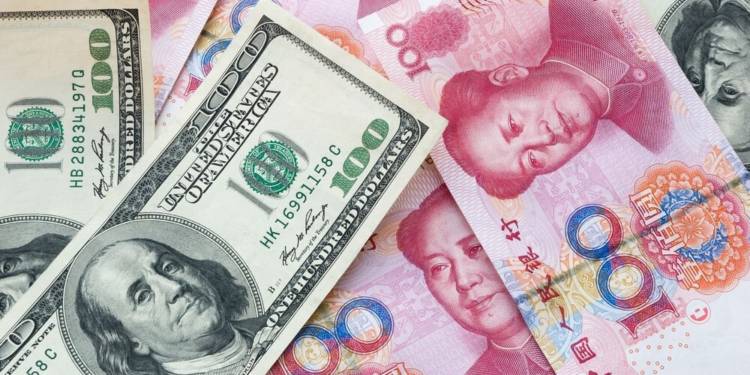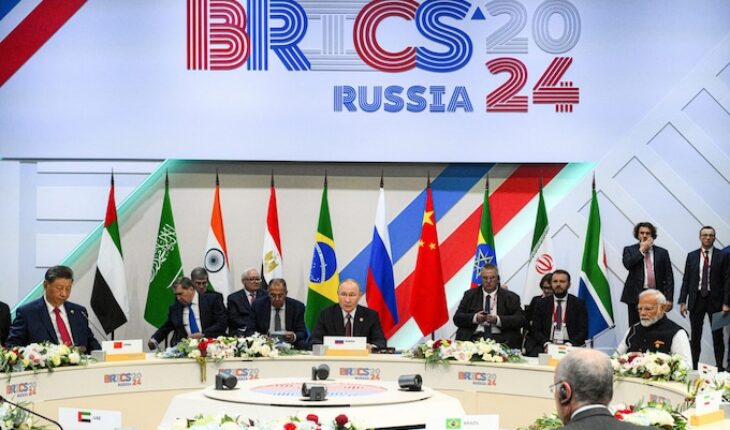With the conclusion of the recently held summit of the BRICS, the decks now appear to be cleared for a much larger acceptance of the Chinese currency, Yuan, as a valid instrument for exchange in the global trade.
Even before a new common currency was developed by the BRICS countries, Yuan appeared to be emerging on international trade as a replacement for the American dollar.
A close study of the details of the summit reveals that in this common venture of China and Russia, India is being persuaded to join this new initiative, which definitely undermines the global image of the US.
In bid to woo India in this anti-US programme, China quietly offers an olive branch to India that too without any commitments. Unfortunately, the stupids amidst the mainline media may be indulging in the rhetoric of the Hindi-Chini bhai bhai or soon be depicting it as a new success of the Modi regime.
Meanwhile, China already has recently been buying crude by paying in Yuan digital instead of using dollars. With the expansion of BRICS, now China appears to be ready to challenge the hegemony of the American dollar in world trade.

The international community, especially the Us-led West, has quietly been watching the Chinese President Xi Jinping’s new diplomatic offensive. He, by just shaking hands with the Indian Prime Minister, Narendra Modi, has won the Indian support for his agenda.
The coverage of the Indian media of this historical occasion could not be called sufficient, especially when the two leaders met on October 23 on the sidelines of the summit held at a Russian city, Kazan.
In this group Iran, Egypt, Ethiopia, and the United Arab Emirates attended the summit for the first summit as member states at the 2024 summit. Saudi Arabia is yet to officially join, but participates in the organization’s activities as an invited guest.
The new members have been enrolled from 1 January 2024 in this group comprising Brazil, Russia, India, China and South Africa.
Reading Between the Lines -The summit despite the symbolism of peace and cooperation by relaxing the tensions at the India -Tibet borders in the eastern Ladakh, the outcome of this meeting could open unprecedented opportunities for the Chinese as well as Indian economy, but if the Indians continue in indulging false narratives just making it as a symbol of India’s successful diplomacy in at attempt to give a macho look to Modi, it’s impact could be disastrous for the country.
Xi Jinping was at his best, when he told the Indian delegation that it was in the fundamental interest of our two countries and two peoples to keep to the trend of history and the right direction of bilateral relations. The two sides should strengthen communication and cooperation, enhance strategic mutual trust, and facilitate each other’s pursuit of development aspirations. The two countries must also shoulder their international responsibility, set an example in boosting the strength and unity of developing countries, and contribute to promoting a multipolar world and greater democracy in international relations.
The response of Narendra Modi could also be described as cautious as well as befitting to these delicate negotiations. He stated “this meeting is constructive and carries great significance. They agreed to view and handle China-India relations from a strategic height and long-term perspective, prevent specific disagreements from affecting the overall relationship, and contribute to maintaining regional and global peace and prosperity and to advancing multipolarity in the world.”
It is quite natural that during such communications held at the highest level of the governments to skip the details. Modi and Jinping were not expected to spell out the details of the outcome, but it is for the media and Industries to assess the opportunities now opened again.
Interestingly, two events took place simultaneously, the first was the exodus of the Indian capital estimated to the tune of Rs. 84,000 crores during the current festive season in India. During this period, China has also showcased its industrial products at the Canton fair.
Even an online visit to this ongoing exhibition will reveal that despite a little setback to its economic growth Chinese products remain unmatched across the continents.
The Myth and Reality– Since its inauguration a decade ago, the Modi regime has been indulging in unnecessary rhetoric and the media, including television channels and newspapers, with the pro -Modi social media platforms, have just been re-echoing the government’s false propaganda. For example, the campaign for the ‘make in India’ is just one of such rhetoric claiming a range of products being manufactured in India, the truth, perhaps, is that it might have been outsourced.
In spite of the government claims, Indian manufacturing continues to suffer due to the government’s apathy, if not eclipsed by an overbearing tax system accompanied by political mafias active even in the states being ruled by the BJP.
In spite of a large number of engineering graduates in India, the financial institutions seldom support entrepreneurs, except a few claims in the pro-government media channels.
Restraining Chinese Companies -The recent statement of the Indian Financial Minister, Nirmala Seetharaman, has stated that the current restrictions on the Chinese companies in India would continue. The situation, however, especially after the Modi-Xi Jinping meeting, is quite different.
The Chinese companies might soon be setting up industrial units for exporting to the world markets. They would be enjoying tax benefits.
Therefore, it is not surprising that the bold statement of the Indian finance minister against the Chinese investments would soon be forgotten.
Gopal Misra has been associated with national and international media. His books on journalism and geo-politics have been well-appreciated. Views are personal.






